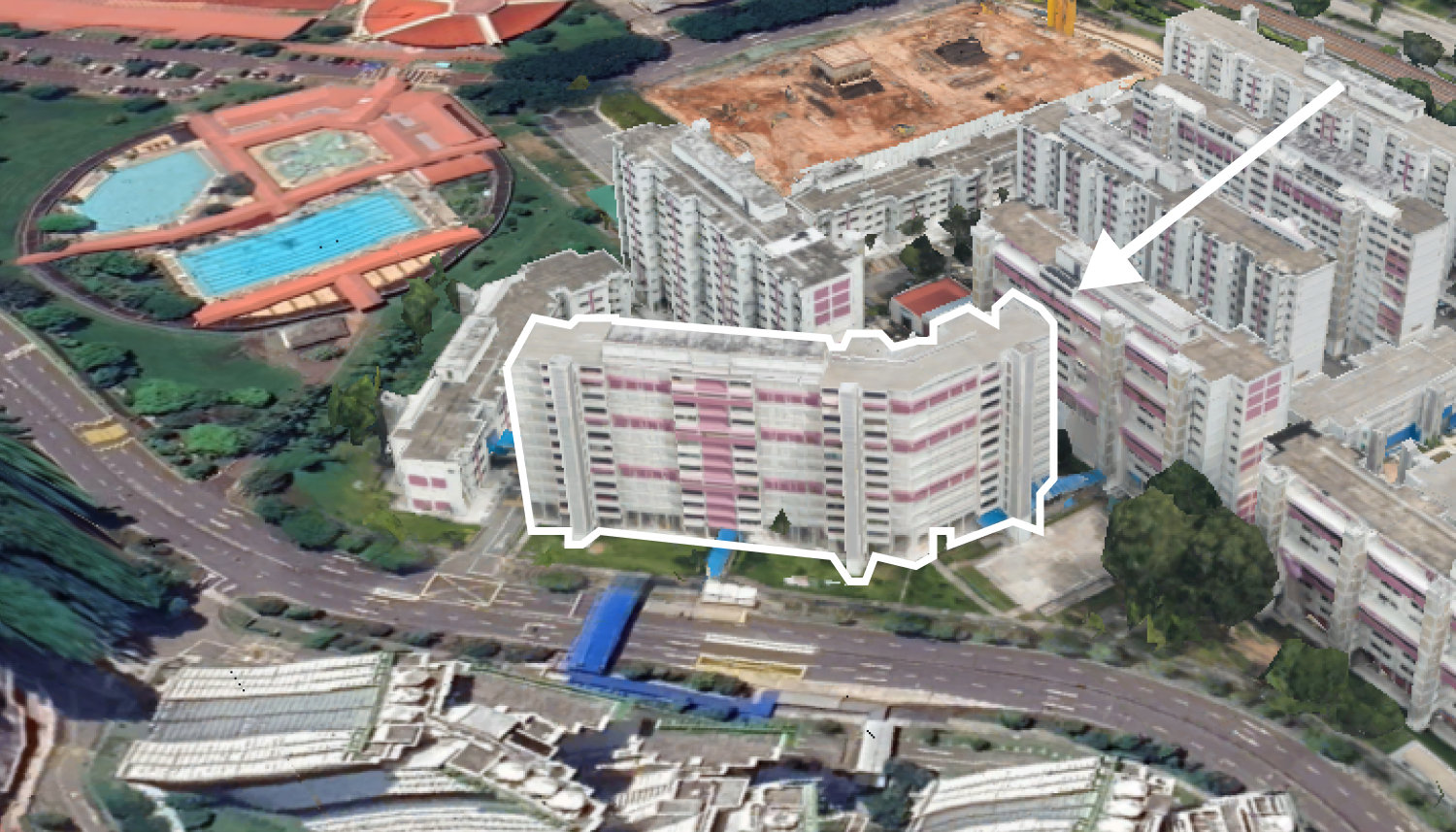We Analysed 96 New Launch Condos. Here’s What We Learnt.
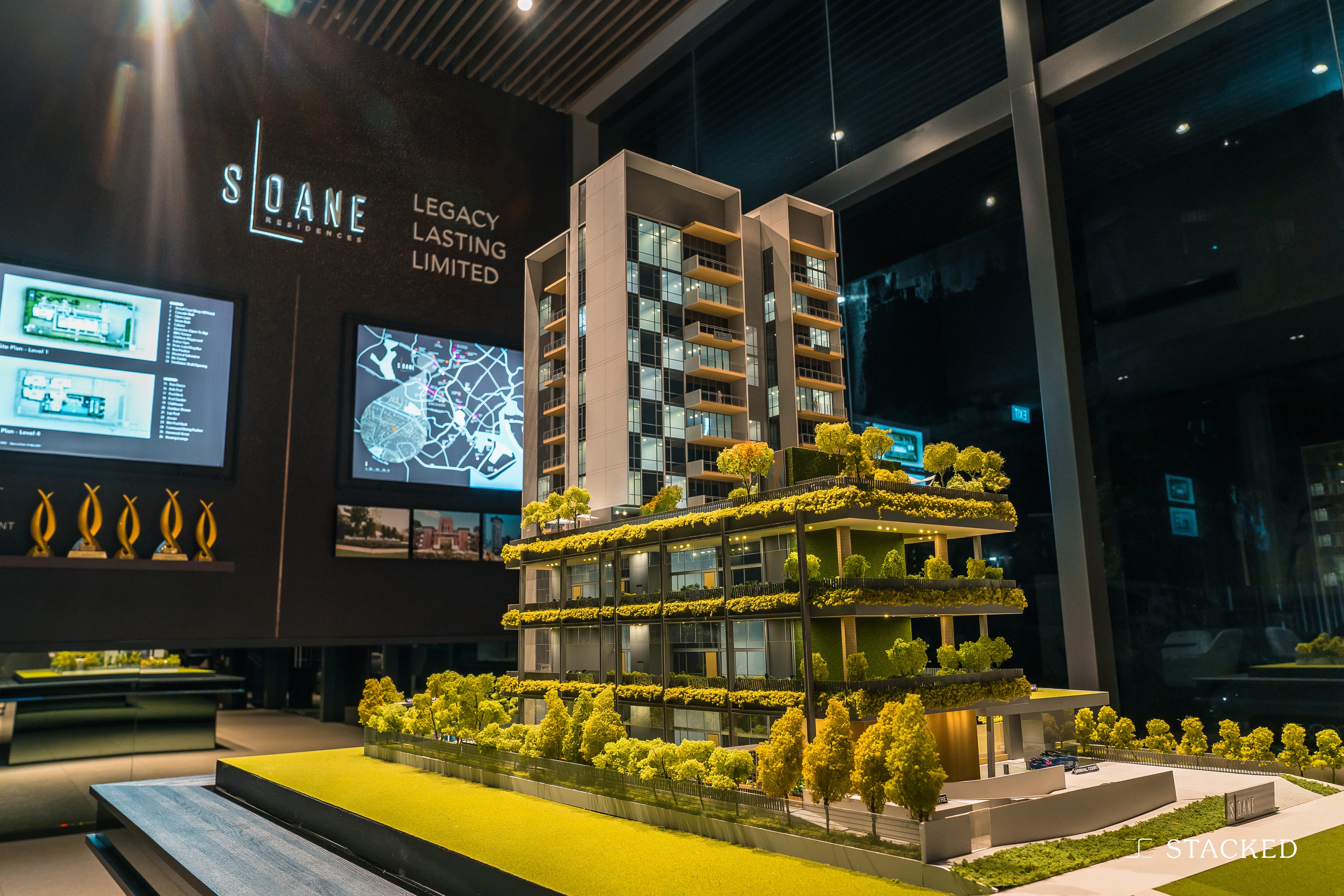
Get The Property Insights Serious Buyers Read First: Join 50,000+ readers who rely on our weekly breakdowns of Singapore’s property market.
Despite the Coronavirus showing no signs of abating around the world, it does seem like there is no separating Singapore from its love of property. Just last weekend, the M has sold a quite frankly astonishing 75 percent of its units, while Luxus Hills managed to sell out its final phase as well – and even managed to set a new benchmark for pricing along the way.
So is there a reason why certain new launch condos do well – even with the current uncertain climate that they are launched in?
Is it always about selling price?
Or do other factors like the size of the development have a big role to play in the performance of the new launch?
In this article, we’ve taken the data from our new launch 2020 cheat sheet to analyse and see if there is any commonality in the data.
As always, let me just lay out the disclaimer first.
There were only 96 new launches that we’ve accounted for – so truthfully, it is a small sample size to really glean anything statistically sound.
For example, certain districts might really only have one new launch, so comparing it wouldn’t exactly be fair.
Let’s start with a couple of highlights.
Highlights: Key pointers
- The average take-up rate for all new launches is at 3.62%. This means most new launch condos sell an average of 3.62% of its total units every month.
- The M has sold a staggering 392 of its 522 units – in 2 weeks. Because of that, it has been an anomaly in all the data such that we’ve taken it out of all except the comparison in districts.
- (If you don’t account for the M) District 2 surprisingly had an average take-up rate of 9.54% – almost 3 times the average take-up rate.
New Launch Condos Take-Up Rate 2020

Selling Prices vs Average Take-Up Rate
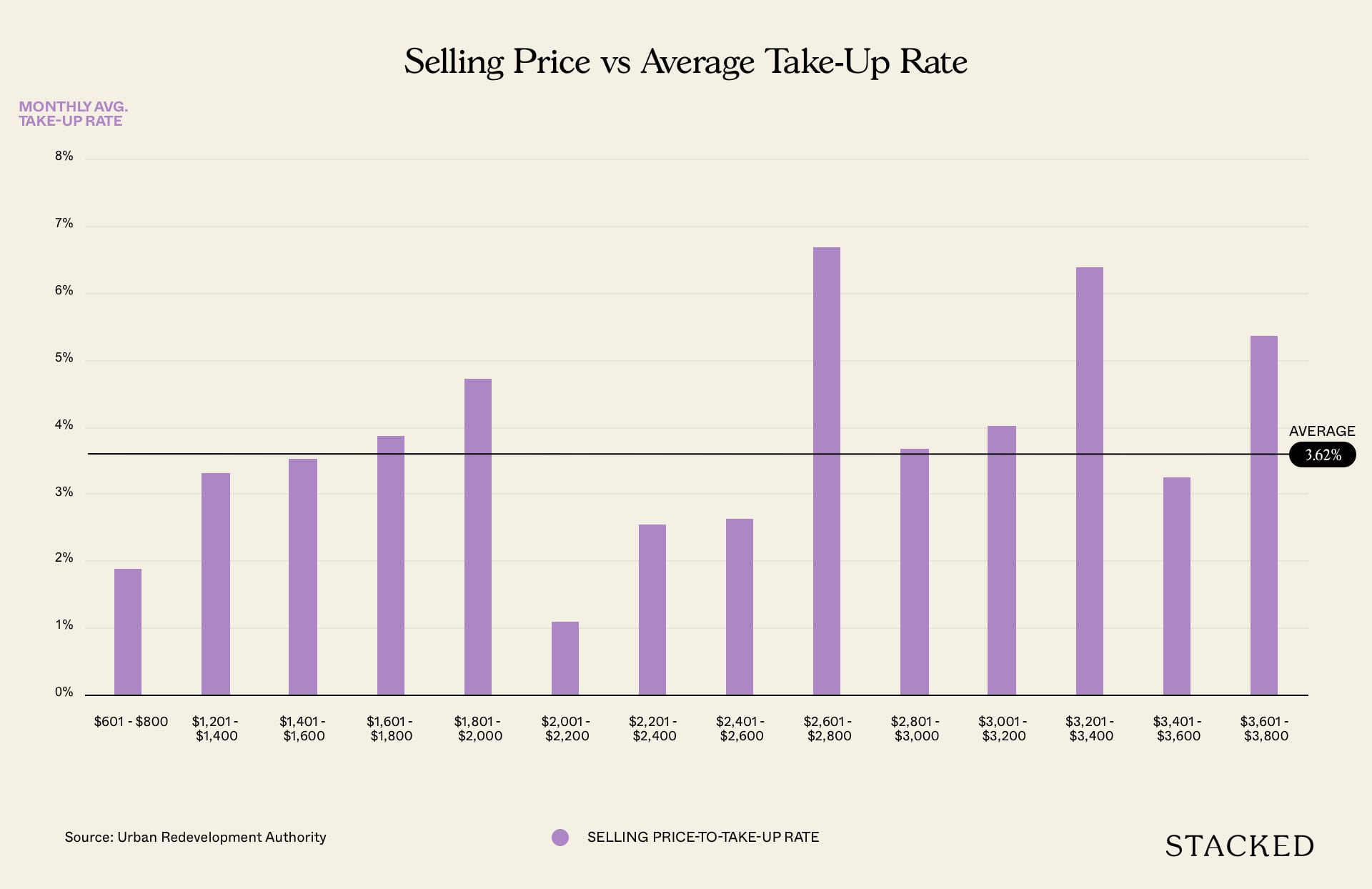
This was an interesting one for us. Ask anyone prior to this and most people would think that a lower selling price means a faster take-up rate.
Well, from the chart you can see that that isn’t the case at all.
In fact, properties in the luxury market sold faster – with new launch condos in the $2601 to $2,800 PSF category achieving a 6.69% monthly average take-up rate. Properties in the $3,201 to $3,400 PSF category weren’t far off at all too at 6.4%.
Difference in Selling Price to District Price vs Average Take-Up Rate
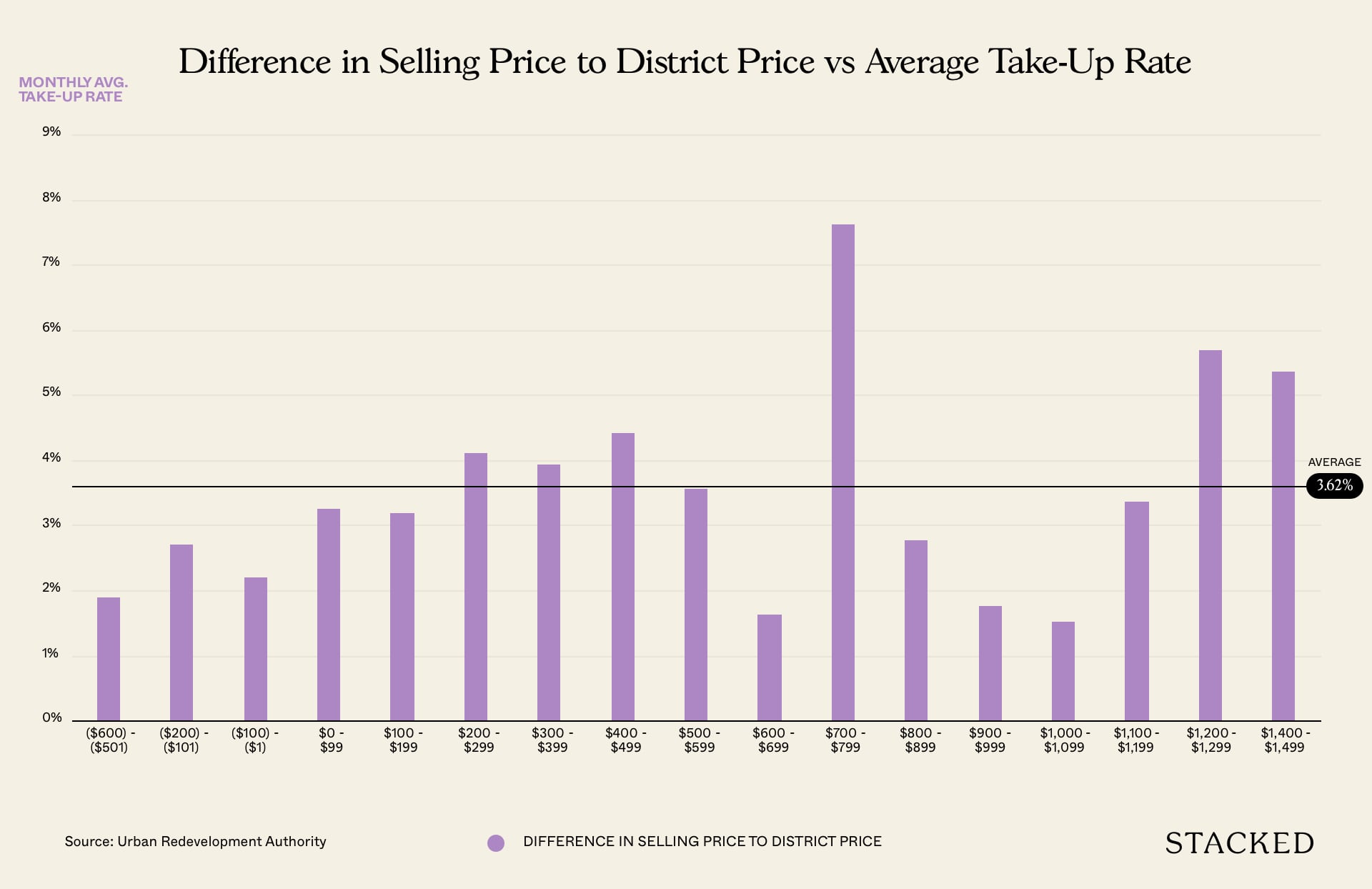
Quite a mouthful of a header here, but it’s quite simple really. We wanted to find out if there was a relationship between new launch condos that were priced under and over the district average PSF.
In a similar story to the above selling prices category, one might expect that new launch condos priced under the district average PSF to sell through faster. But that’s not the case at all – with the sweet spot for selling prices at $700 – $799 above the district average PSF doing well at 7.62%.
You’ll see from the graph too that the highest category at $1,400 to $1,499 has done rather well with an above-average 5.37% take-up rate. But it’s worth noting that this is solely based on the performance of the Boulevard 88 – the only one in this category. Like we mentioned earlier, it’s a small sample size so don’t read too much into this one!
More from Stacked
Why This Iconic Hilltop Condo Near Three MRT Lines Is Underperforming
One Pearl Bank drew plenty of attention when it launched in 2019, and not only for its architecture. The redevelopment…
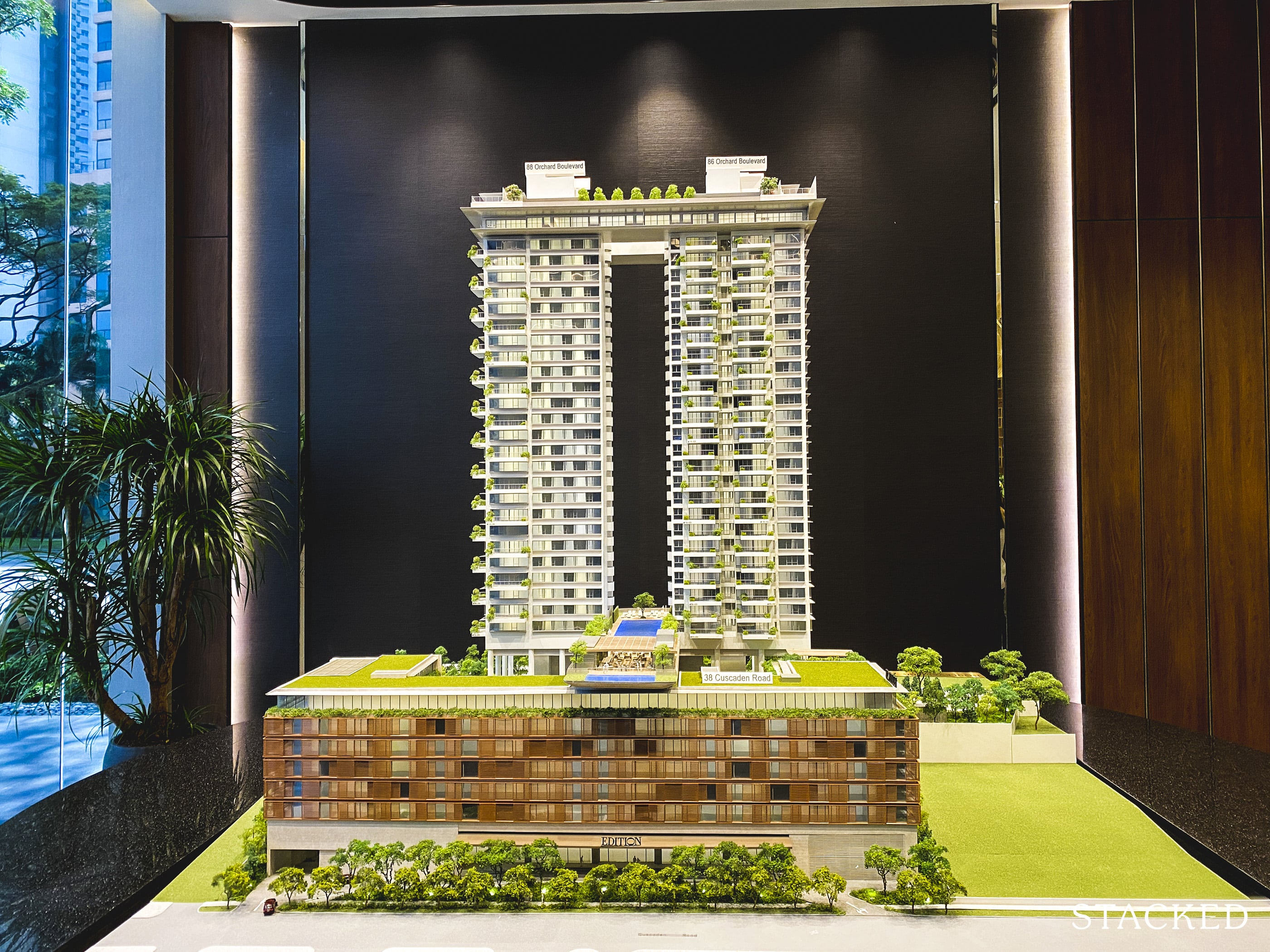
New Launch Condo ReviewsBoulevard 88 Review: Infinity Sky Pool In Prime Orchard Boulevard
by Reuben DhanarajNumber of Units vs Average Take-Up Rate
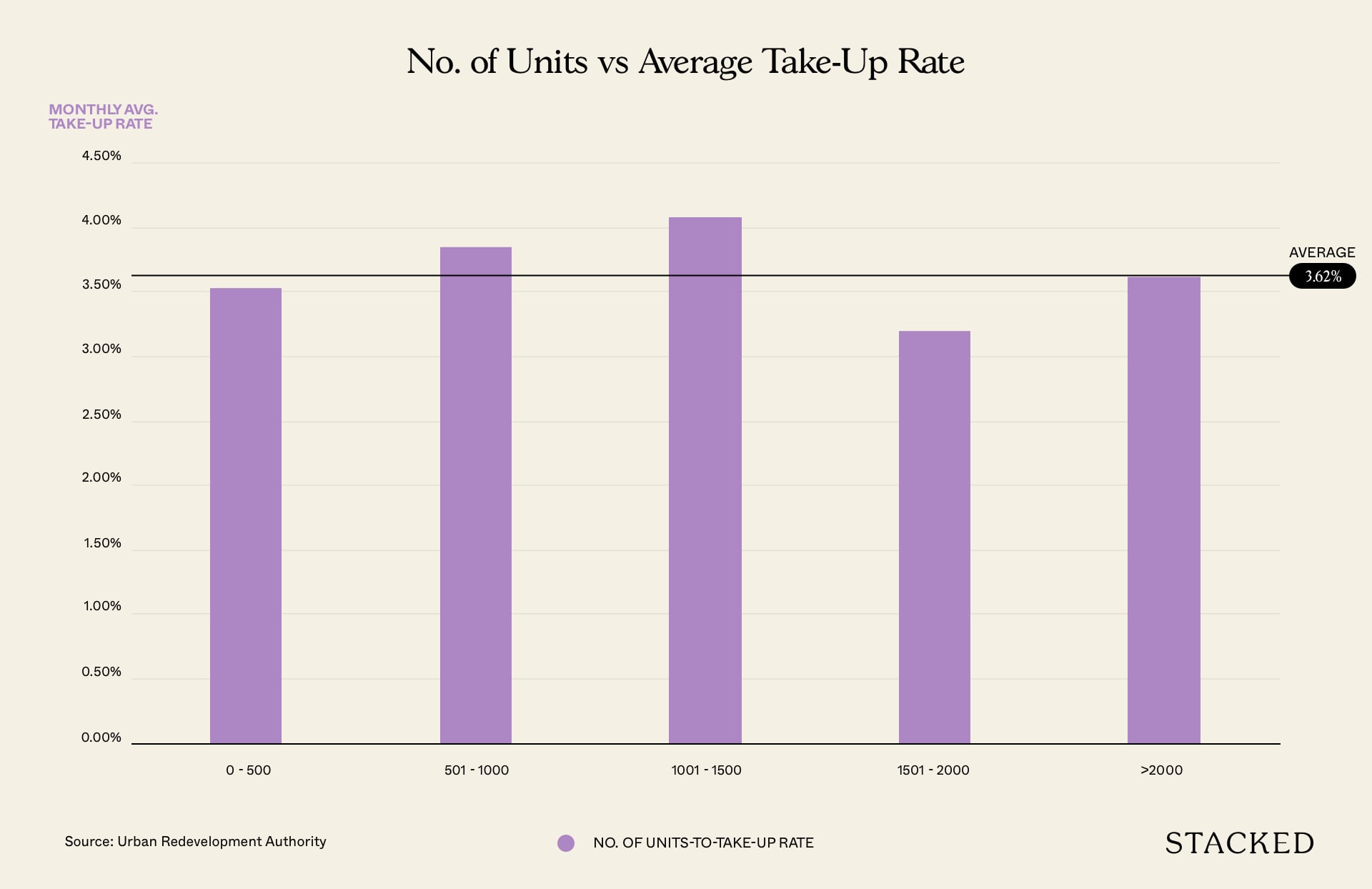
As you can see, this was quite the dud as on the surface it seems as if there is no real correlation between the number of units and the average take-up rate at all.
To be fair in this case, it is hard to come up with any meaningful conclusion given that 66 of the 96 condos in this list came under the 0 to 500 unit category. There was only one in the above 2,000 units – Treasure at Tampines. Perhaps if there were more launches in the larger categories we could see something more concrete, but that would be something hard to achieve given these are generally seen to be more risky to developers.
Margin vs Average Take-Up Rate

Before we go into this, it must be said that the margins for these are all based on an estimation of costs to the developer such as construction, land financing, legal fees, and marketing. The only figures that are certain are GFA and the cost of the land.
Again, this was quite a surprise as we thought there might be some correlation here too. But the results appear to be quite even across the board. Of course, this could change if units do not move as those new launch condos with higher margins can afford to spend more on marketing, incentivise agents with more commissions, or simply lower the price (worst case scenario).
District vs Average Take-Up Rate
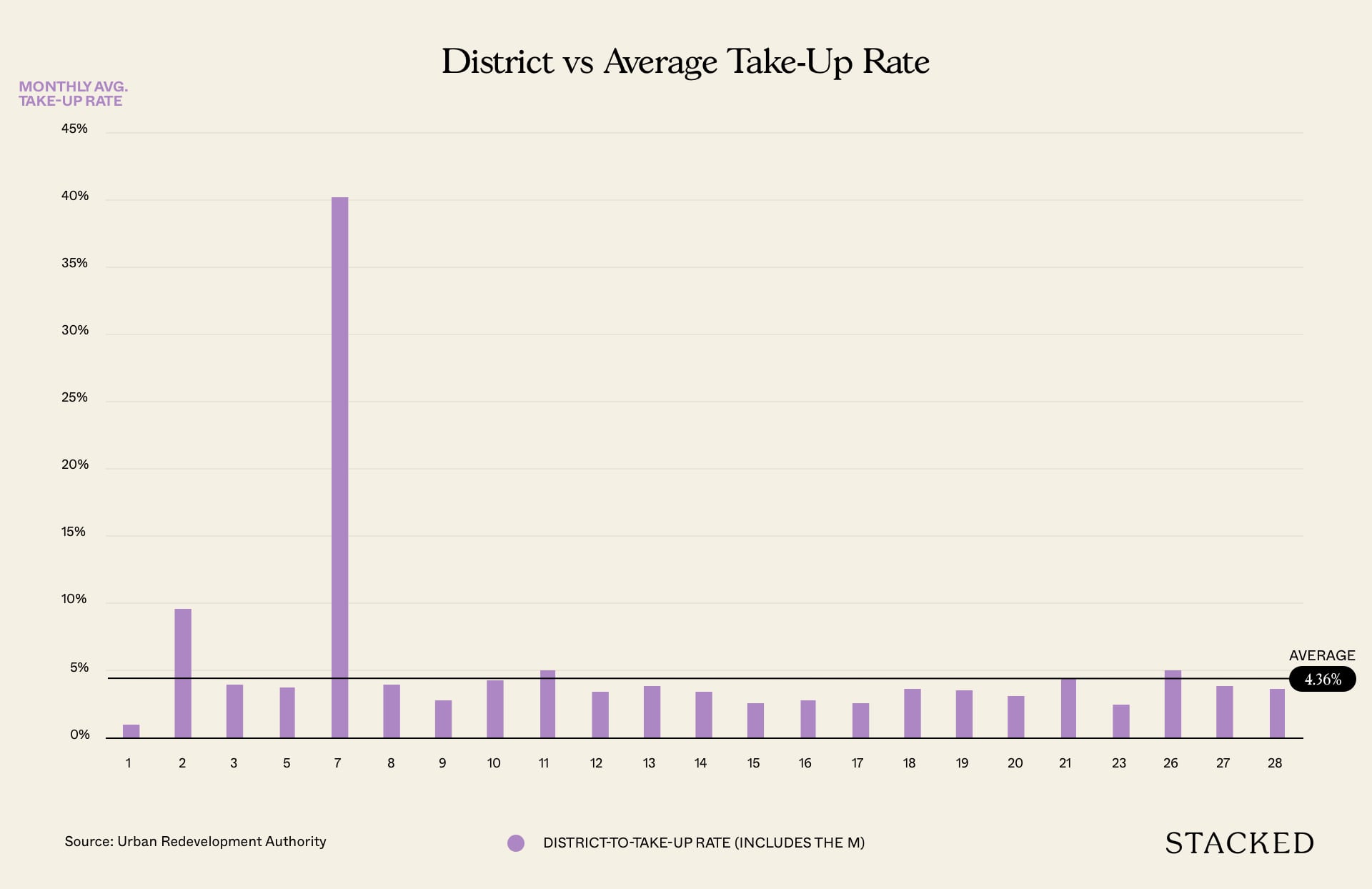
Last but not least, we wanted to see if the popularity or future potential of a district can play a role in the average take-up rate.
This is the only chart that we’ve decided to include the M into the findings, and as you can see, it has clearly skewed the data – with a 40.13% average take-up rate.

If we were to take out the M, it drops to second place, with District 2 overtaking it.
Final Words
Ultimately, these statistics are based on correlation, not causation.
And while the final data hasn’t really provided anything out of the ordinarily interesting we can still draw one major conclusion from this:
There is never just one major reason for a new launch doing well.
It is always due to a combination of factors that cannot be ignored.
Buying real estate is not like choosing the best fridge for your kitchen – it isn’t an easy decision at all and there are a ton of factors that come into play.
Need help in choosing a new launch condo for yourself? Feel free to reach out to us at hello@stackedhomes.com!
If you’d like to get in touch for a more in-depth consultation, you can do so here.
Sean Goh
Sean has a writing experience of 3 years and is currently with Stacked Homes focused on general property research, helping to pen articles focused on condos. In his free time, he enjoys photography and coffee tasting.Read next from Property Investment Insights

Property Investment Insights How A Once “Ulu” Condo Launched In 1997 Became A Top Performer

Property Investment Insights This 698-Unit Ang Mo Kio Condo Launched At The Wrong Time — And Still Outperformed Peers

Property Investment Insights These Resale Condos In Singapore Were The Top Performers In 2025 — And Not All Were Obvious Winners

Property Investment Insights How A 944-Unit Mega-Condo In Pasir Ris Ended Up Beating The Market
Latest Posts

New Launch Condo Analysis I Reviewed A New Launch 4-Bedroom Penthouse At Beauty World

Property Market Commentary When Renting In Singapore Is The Smarter Move — And Buying Can Wait

Landed Home Tours Why Singaporean Families Are Looking At This Landed Enclave From Around $4M

Singapore Property News Lentor’s First Condo Is Complete — The Early Profits May Surprise You

Property Market Commentary A Wave Of New HDB Resale Supply Is Coming In 2026: Here’s Where To Find Them

Property Advice We Own A $800K 1-Bedder And A $1.1M 3-Bedder: Is It Possible To Upgrade To A 4-Bedder Condo?

On The Market These Are Some Of The Cheapest 5-Room HDB Flats Left In Central Singapore
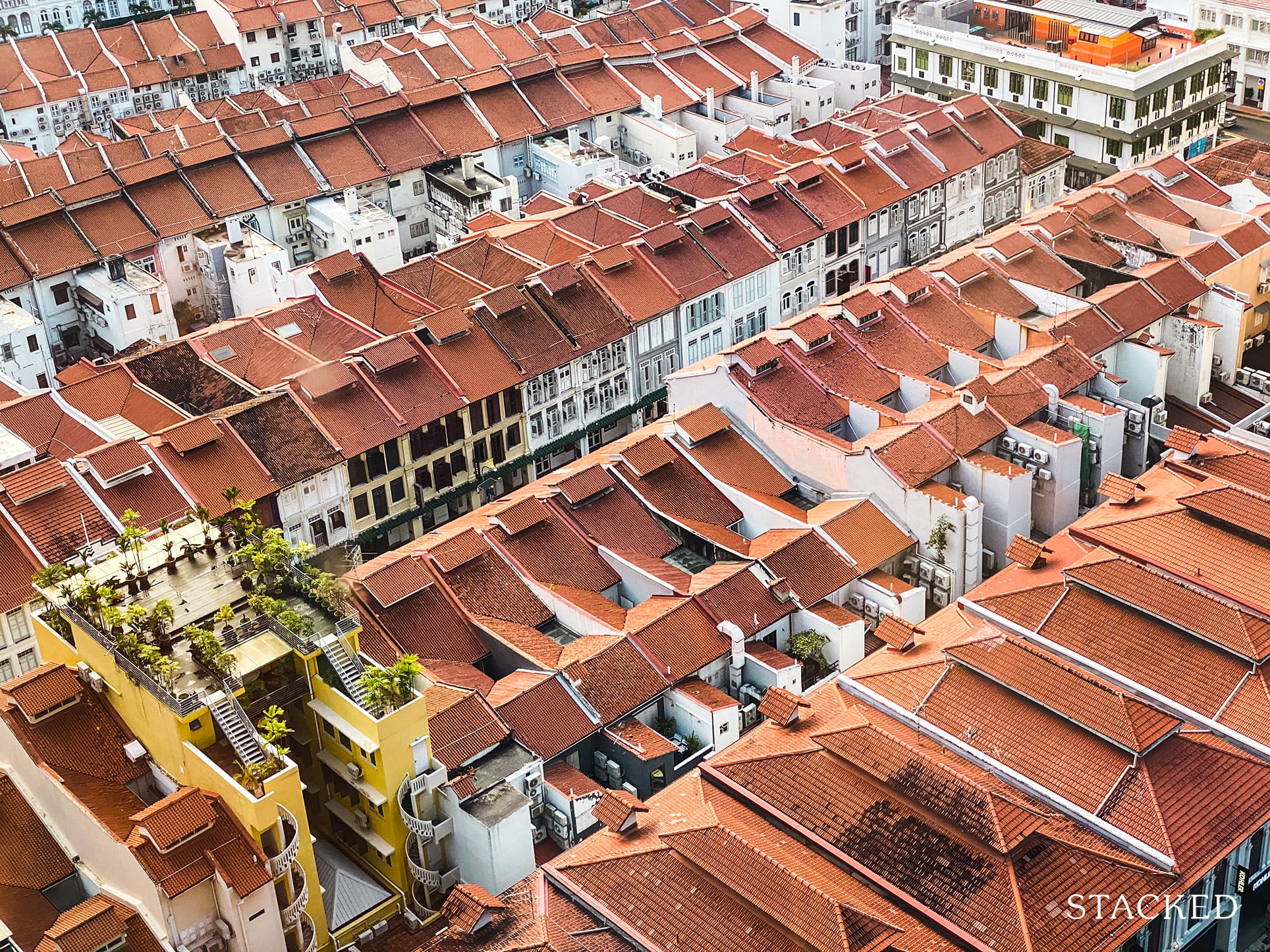
Singapore Property News $281.2M in Singapore Shophouse Deals in 2H2025 — But That Number Doesn’t Tell the Full Story
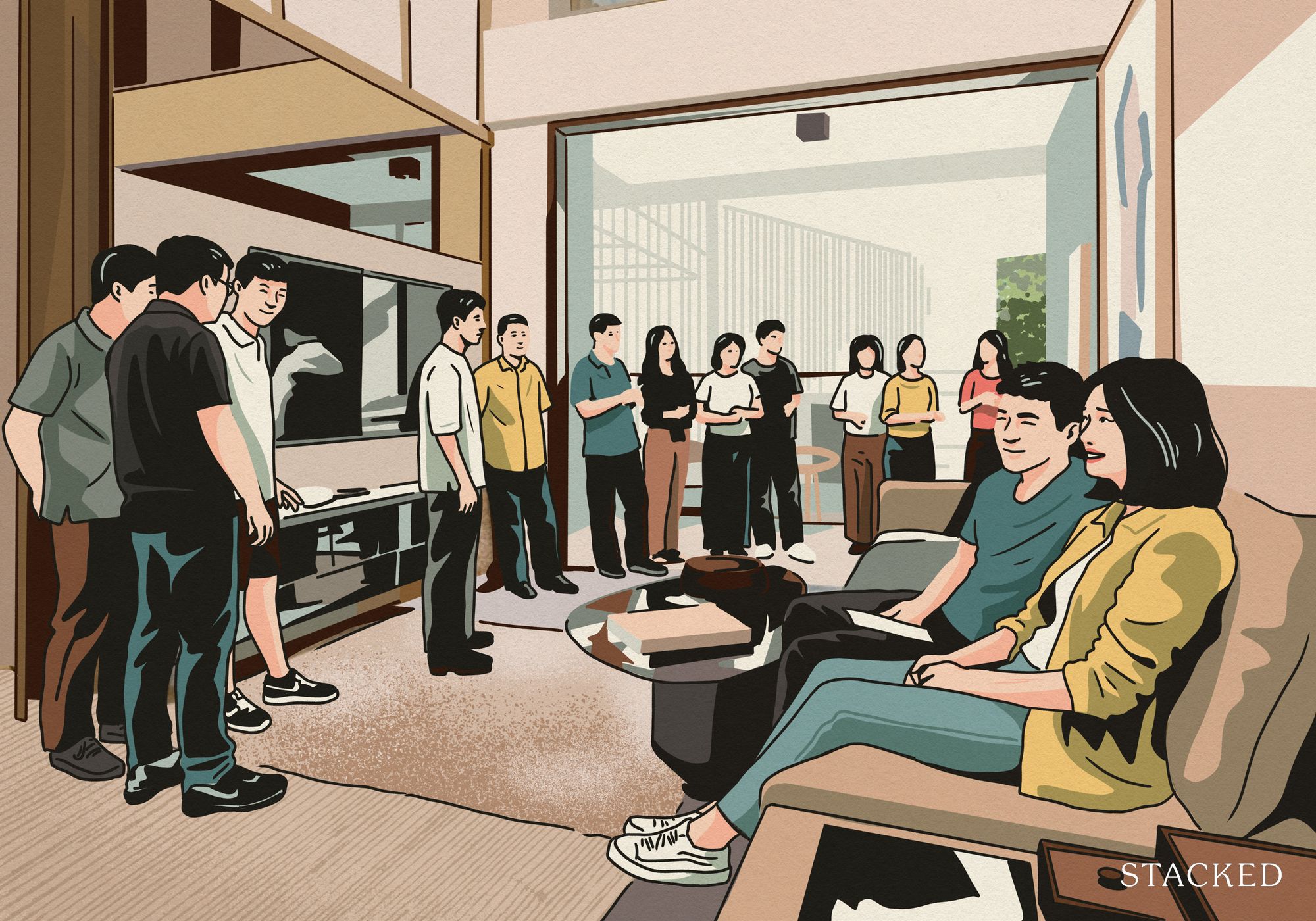
Property Market Commentary 5 Key Features Buyers Should Expect in 2026 New Launch Condos
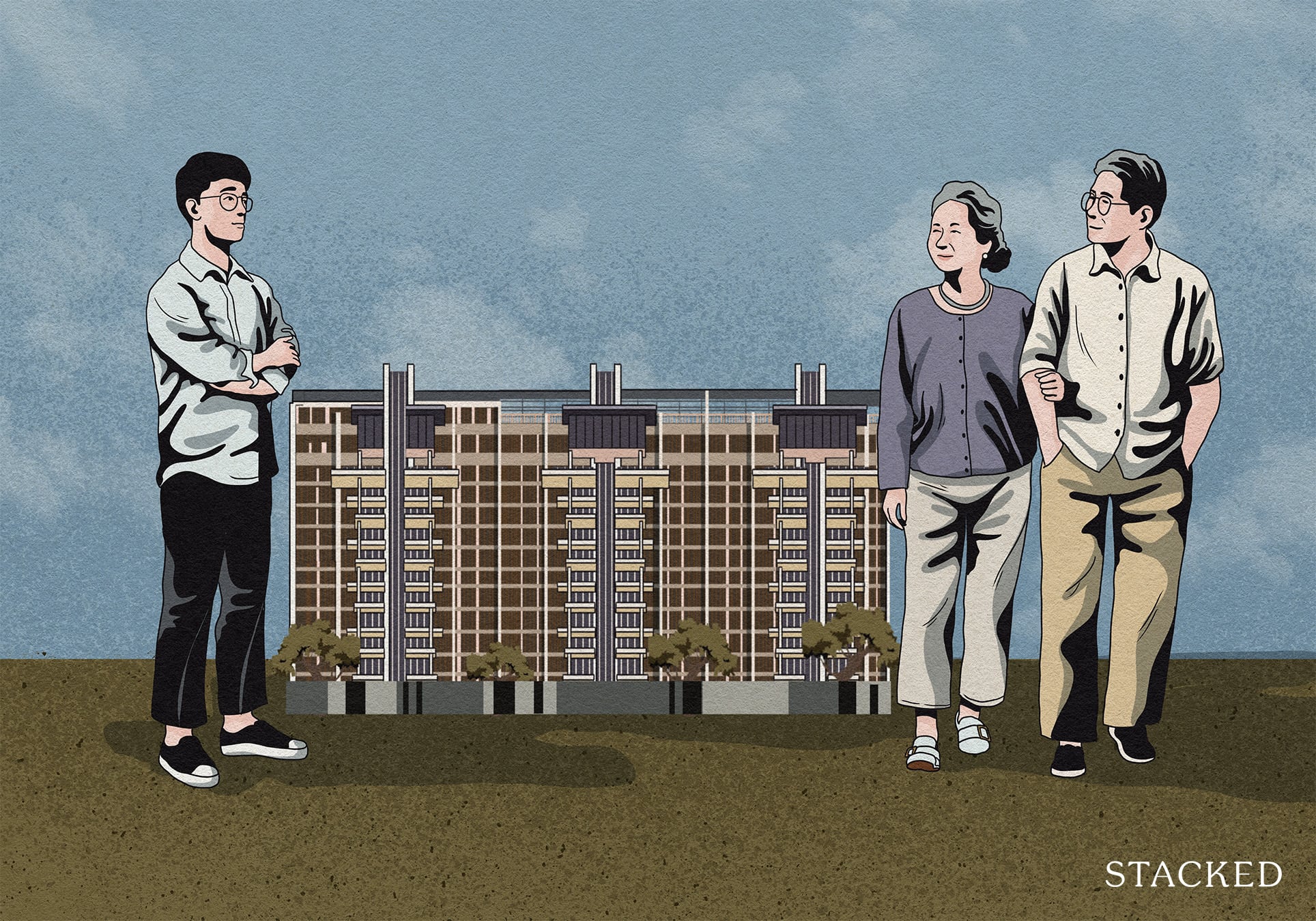
Editor's Pick What “Lucky” Singaporean Homebuyers Used To Get Away With — That You Can’t Today

Singapore Property News CapitaLand–UOL’s $1.5 Billion Hougang Central Bid May Put Future Prices Above $2,500 PSF
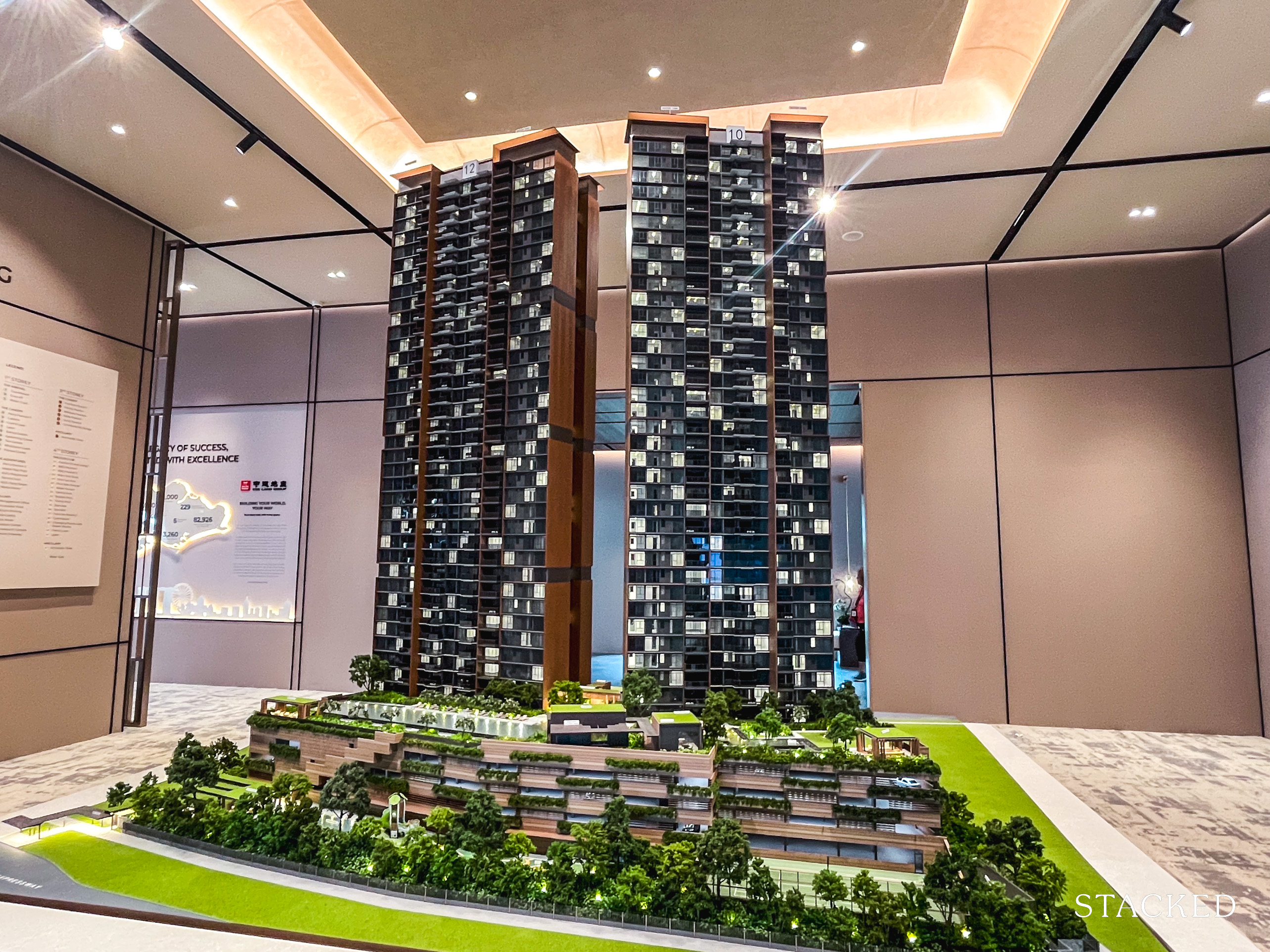
Singapore Property News Why New Condo Sales Fell 87% In November (And Why It’s Not a Red Flag)
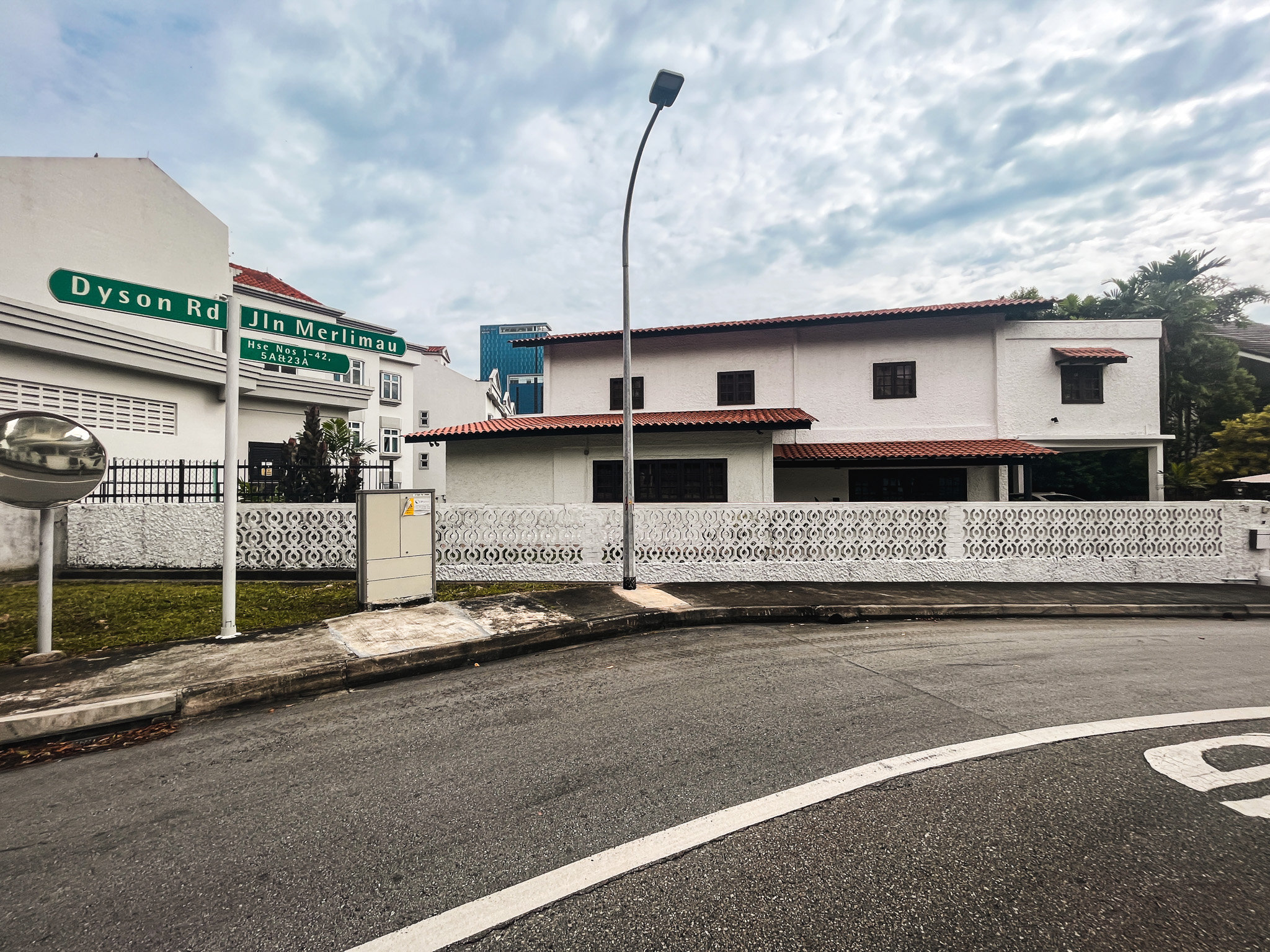
Editor's Pick We Toured A Quiet Freehold Landed Area Near Reputable Schools — Where Owners Rarely Sell

Singapore Property News How Much Smaller Can Singapore Homes Get?

Editor's Pick The Biggest Mistake Singaporeans Make When Analysing Overseas Property
